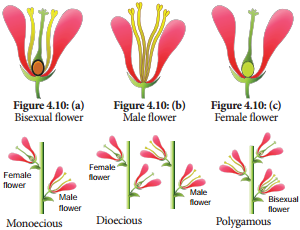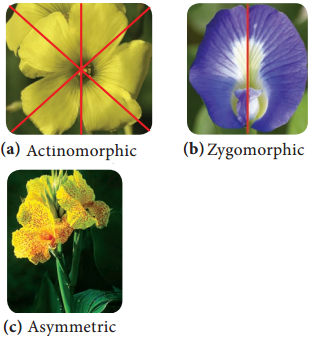Learninsta presents the core concepts of Biology with high-quality research papers and topical review articles.
Flower – Definition of Flower and its Various Types
In a plant, which part would you like the most? Of course, it is a flower, because of its colour and fragrance. The flower is a significant diagnostic feature of angiosperms. It is a modified condensed reproductive shoot. The growth of the flower shoot is determinate.
Whorls of Flower
There are two whorls, accessory and essential. Accessory whorl consists of calyx and corolla and essential whorl comprises of androecium and gynoecium. Flower is said to be Complete when it contains all four whorls. An Incomplete flower is devoid of one or more whorls.
Flower Sex
Flower sex refers to the presence or absence of androecium and gynoecium within a flower.
1. Perfect or Bisexual:
If a flower contains both androecium and gynoecium it is called as a perfect flower.
2. Imperfect or Unisexual:
When the flower contains only one of the essential whorls is called Imperfect flower. It is of two types:
(i) Staminate Flowers:
Flowers with androecium alone.
(ii) Pistillate Flowers:
Flowers with gynoecium alone.

Plant Sex
Plant sex refers to the presence and distribution of flowers with different sexes in an individual plant.
1. Hermaphroditic:
All the flwers of the plant are bisexual.
2. Monoecious:
Both male and female flowers are present in the same plant Example: Coconut.
3. Dioecious:
Male and Female flowers are present on separate plants. Example: Papaya, Palmyra.
4. Polygamous:
The condition in which bisexual and unisexual (staminate/pistillate) flowers occur in a same plant is called polygamous. Example: Musa, Mangifera.
Flower Symmetry
What is the radius of a circle? Cut a paper into round shape, fold it so as to get two equal halves. In how many planes will you get equal halves? In how many planes you can divide a cucumber in two equal halves? A flower is symmetrical when it is divided into equal halves in any plane running through the center. Flower symmetry is an important structural adaptation related to pollination systems.
1. Actinomorphic (or) Radial or Polysymmetric:
The flower shows two mirror images when cut in any plane or radius through the centre. Normally there are more than two planes of symmetry. Example: Hibiscus, Datura.

2. Zygomorphic (Bilateral Symmetry) or Monosymmetric:
The flower can be divided into 2 equal halves in only one plane. Zygomorphic flower can efficiently transfer pollen grains to visiting pollinators. Example: Pisum, Bean.
3. Asymmetric (Amorphic):
Flower lacks any plane of symmetry and cannot be divided into equal halves in any plane. Parts of such flowers are twisted. Example: Canna indica.